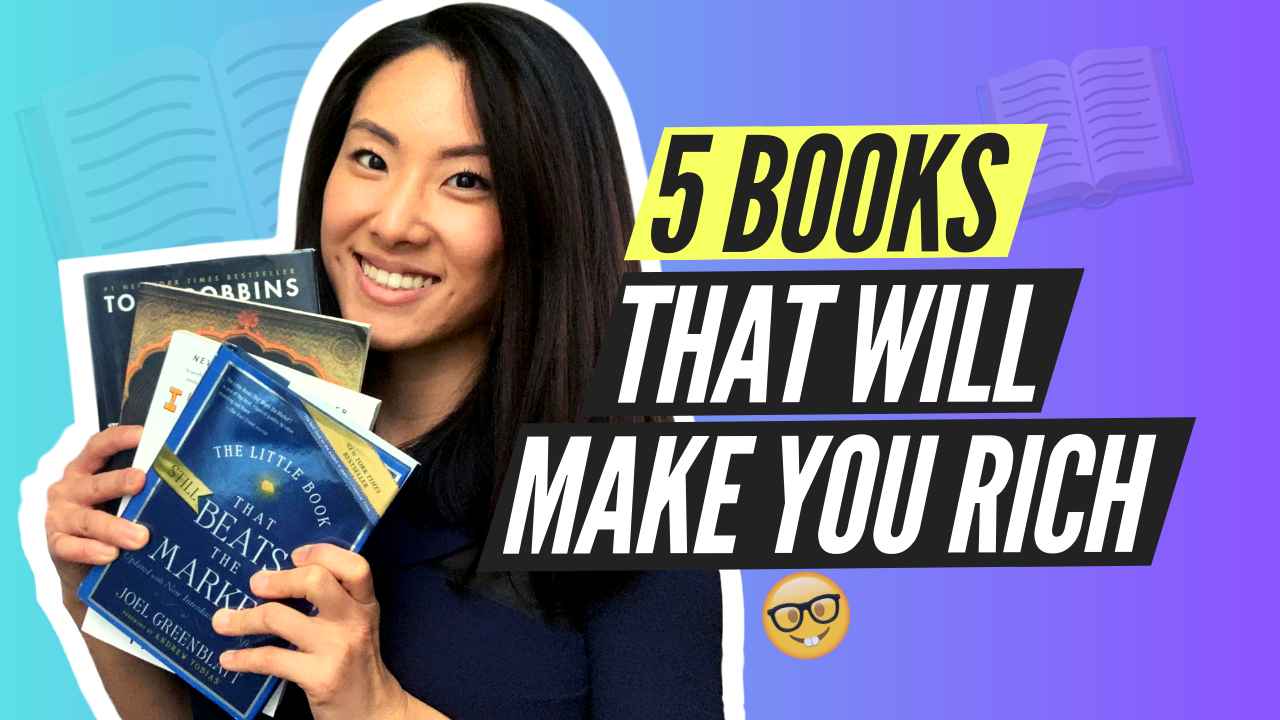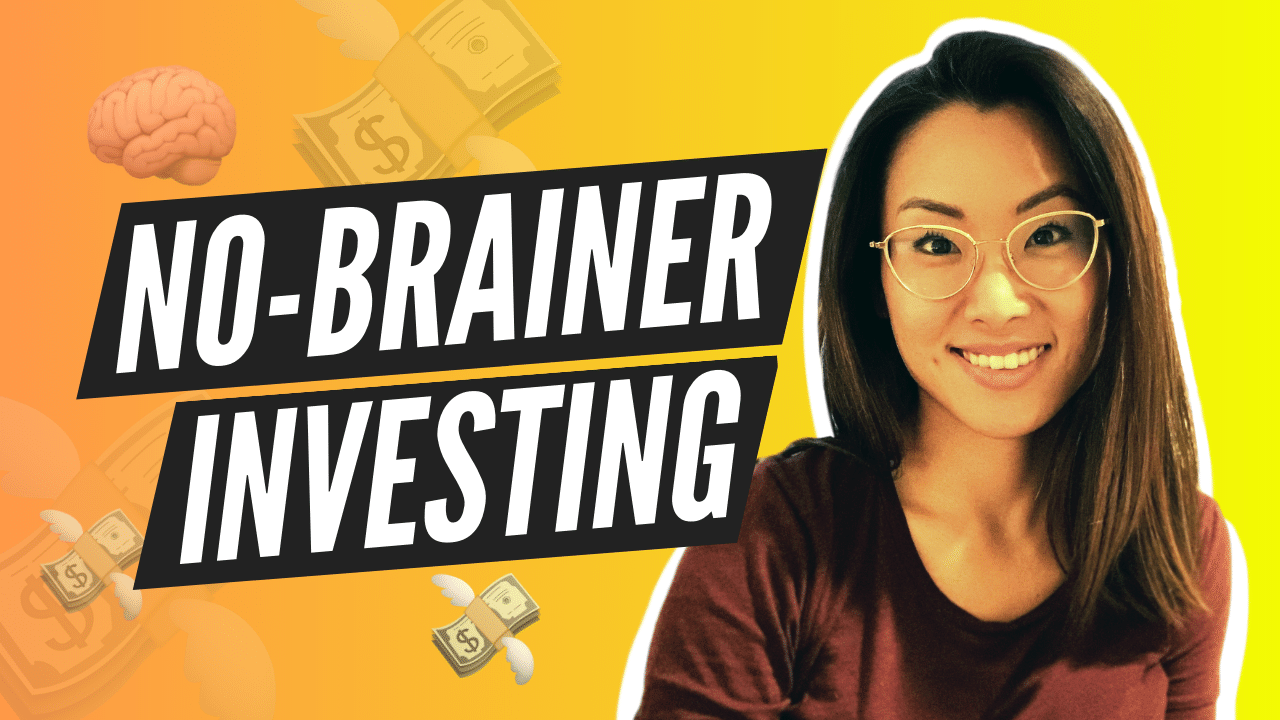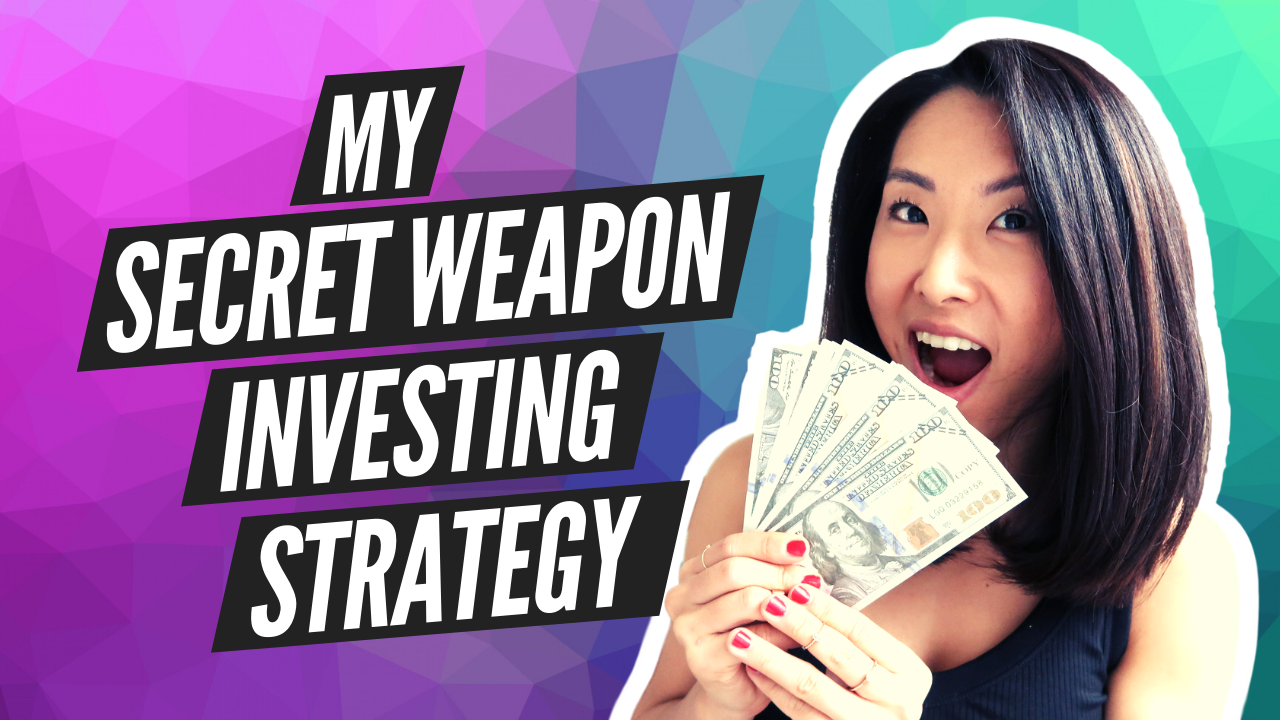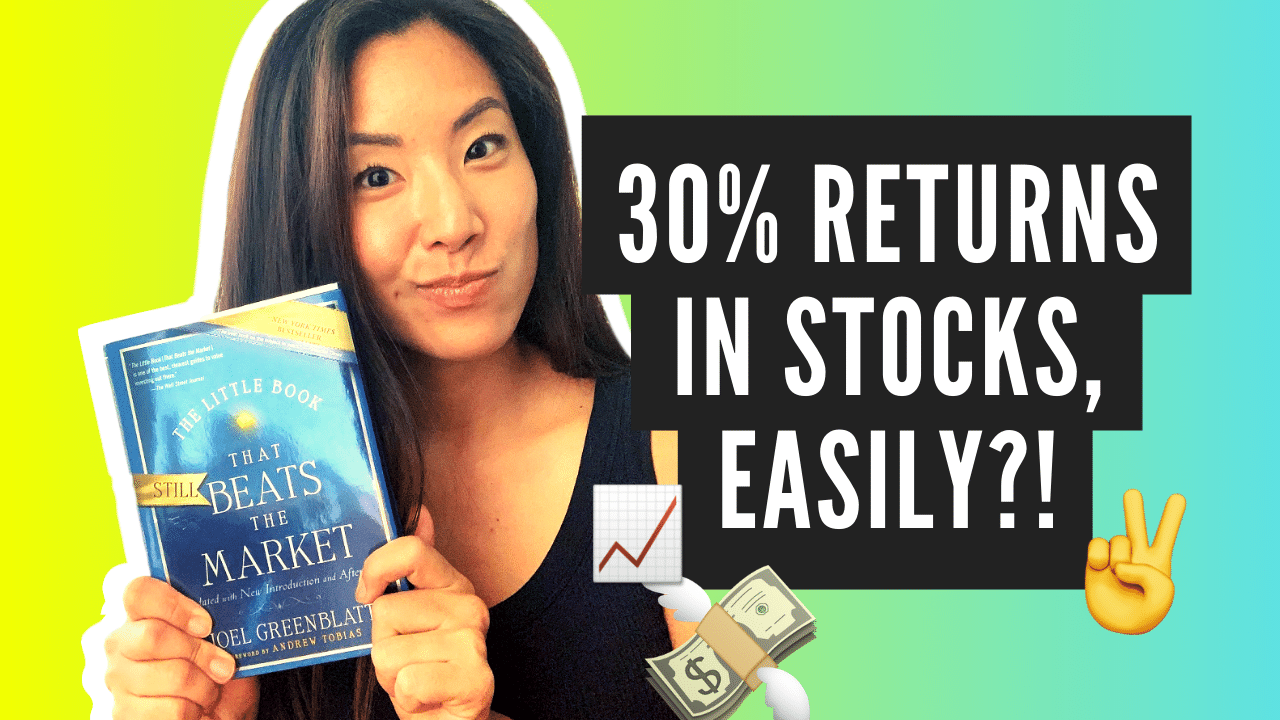No one ever got rich by saving money.
If you want to become financially free, you need to invest. In this article, I’m going to share with you five books that will teach you everything you need to know about investing, and I mean everything. What you’ll learn in these books will make you rich.
The list I’m about to share with you is a highly curated beginner-friendly list that I always recommend whenever anyone asks me about how to get started investing. I’ll summarize the main takeaways of each book, the insights that I’ve found most helpful personally, and basically do my best to convince you to read them for yourself. Even if you don’t read them, I will do my best to distill the essential pearls of wisdom from each book right here in this article. I always have a stack of books on my bedside table and usually, you’ll find me reading multiple books at a time.
The First Best Book to Read
All right. Without further ado, the first book on my list is Unshakeable by Tony Robbins. This book was a followup to his bestseller MONEY Master the Game and that’s also a great book to read, but this one is shorter and more digestible in my opinion. I have to say this book honestly blew my mind. There were so many eye-opening stats and facts, and it took my confidence as an investor to a whole new level.
Unshakable is divided into three sections. Section one is called Wealth, the rule book, and it’s all about the facts and foundational knowledge about how financial markets and Wall Street works. Section two is called the Unshakable Playbook. It explains the core principles of smart investing. Section three is called the Psychology of Wealth. It explains the biggest mistakes investors make and how to avoid them.
My favorite part of the book was chapter two where Tony goes through seven freedom facts. So many people avoid investing because of fear, but these facts will help you see things through a more informed, educated lens. For example, here’s freedom factor number four. The stock market rises over time despite many short term setbacks.
So it’s easy to be shortsighted and be overly fixated on the possibility of a market downturn, but fear of short-term market moves drives you to make poor investing decisions such as not investing at all or selling at a bad time. Despite a 14.2% average drop within each year, the US stock market ended up with a positive return in 27 of the last 36 years. I love how Tony Robbins backs up everything he says in the book with tons of numbers, charts, and statistics.
Quickly, I also want to share freedom fact number five from the book. Historically, bear markets have happened every three to five years. Again, it’s pretty common to have a lot of fear about bear markets, but once you know and understand that bear markets are frequent every three to five years and that they’re to be expected, you can take them with a grain of salt. So freedom fact number five tells you that market downturns are par for the course and therefore not a reason to freak out or be afraid of getting started investing.
The most eye-opening freedom fact was number seven, the greatest danger is being out of the market. So it’s super tempting to sit in cash until stock prices have fallen or to just get out when the market’s crashing and get back in when it looks safe again. A lot of investors do this, especially with newbie investors. It ends up costing them a lot of money because it is just too difficult to time the market.
In the book, Tony explains how if you missed out on the top 10 trading days during a 20-year period, your returns got cut in half from 8.2% per year to four and a half percent. Just by missing 10 days in a 20-year period, you made half the return. If you missed it the top 30 trading days, you made it zero. Crazy, right? So what that means is you need to stay in the market and not try to go in and out during that period. Otherwise, you could miss out on some of the best trading days of the year and those days, those few days, which no one knows when those will be are what make up the majority of the returns that you can expect.
There’s a ton of other eye-opening, mind-blowing data in this book. Anyone who’s investing their money successfully isn’t superhuman or any braver than you are. They just understand the facts so that they act on the basis of knowledge, not emotion. So if you too want to learn how to act on the basis of knowledge, not emotion as an investor, please, please, please get yourself a copy and read this book.
The Second Best Book to Read
The next book on my list is Invested by Danielle and Phil Town. This book is about how to invest in individual stocks. I like this book because it’s a little different from the other ones on my list. Some of the other books I’m going to talk about are written by experienced professional investors. However Invested is written by a non-professional investor, Danielle. So she wrote this book together with her father Phil Town, who is a professional; he’s a hedge fund manager.
Invested is a funny dialogue between Danielle and her dad as he tries to teach her about investing. The book documents her journey as she goes from knowing nothing about investing, to knowing enough about investing, to have the courage and knowledge to put her money in stocks. I love the questions that she asked her dad along the way because they’re all questions that any beginner would have, so it’s a very relatable book.
What’s great about this book is that it teaches you step-by-step how to do detailed research on a company. You’ll learn about the big four, which are the four key numbers to look for on a company’s financial statements. The big four numbers are net income, book value, sales, and operating cash flow. The book shows you exactly where to find these numbers in the financial statements, and it also explains how to interpret them. You’ll also get a comprehensive checklist, a companion PDF that contains all the steps you need to go through in the research process.
So for example, the first step on the checklist is to ask yourself if you’re capable of understanding the company. Other steps on this checklist include things like summarizing the business, the industry, and the competitive landscape, looking up the big four numbers, calculating projected growth rates, researching the management team, and calculating a target by price for the stock. It’s a pretty detailed book that gets quite technical.
You’ll find a few formulas, equations and things like that in here. Even though it teaches pretty advanced concepts, all the information is presented in a way that anyone can understand, literally anyone. Because the author Danielle Town, she doesn’t come from a finance background and whenever any financial jargon comes up, she always explains it in her own words. I often find her explanations very relatable and amusing.
My favorite thing about this book is that it’s extremely practical. It shows you exactly where to find the company’s financial statements, what section of the financial statements to look at, how to calculate things. The book also includes actual examples using stocks that you would recognize like Costco and Chipotle. There’s a lot of books out there about stock valuation. A lot of them are quite theoretical, not about how to actually do it in practice. So if you’re interested in learning how to pick stocks, this book is a must-read.
The Third Best Book to Read
Next up is The Little Book of Common Sense Investing by Jack Bogle. I only have a digital copy of this book so I don’t have it with me here. For those of you who don’t already know, Jack Bogle is the founder of Vanguard. He’s considered to be the OG of index fund investing.
In a complicated financial world where there’s always some expert trying to sell you something and profit off your lack of knowledge, this book is refreshingly simple and gives you an unbiased explanation of investing. In fact, this book is so popular that there is now an entire community of investors that live and breathe Jack Bogle’s investing philosophy.
Bogleheads.org is a very active and informative online forum that’s basically the Reddit of investing. If you’ve looked into investing at all, you’ve probably heard the advice that you should put your money into low-cost index funds. Well, this book really explains why. I find that it’s much easier to follow through on a piece of advice when you understand why that advice works. So in this book, Jack Bogle explains why index funds outperform other kinds of funds over the long run. Index funds always have lower fees than actively managed funds. When actively managed funds tars those higher fees, the returns are rarely ever enough to compensate for those fees.
Over a one-year period, about 29% of active mutual funds would be expected to outpace the index or the overall market. Over a five-year period, only about 50% would be expected to outperform. Over 10 years, only 9%. Over a 25-year period, only 5% of active funds will beat the market. Over a 50-year period, only 2% of active managers would outperform the market.
So to quote Jack Bogle from the book, “Performance comes and goes, costs go on forever.” The book also goes into specifics like what kind of stock index funds and bond index funds to invest in, what percentage of your money to invest in each, domestic versus international stocks and so on and so forth. Jack Bogle lays it all out in a way that’s super easy to understand. The investment industry is a huge money-making enterprise out to make itself rich, not its customers. So this book will help you take your power back by teaching you how simple it is to invest successfully on your own.
Personally, my biggest takeaway from the book is that when it comes to investing, simple works. Jack Bogle’s investing philosophy is insanely simple and effective. Just put your money in low-cost index funds, buy and hold, but for whatever reason us humans love to complicate things. We tend to have a bias towards thinking that more complicated equals more effective.
This book is a gentle reminder that at least when it comes to investing in the stock market, that’s not true. The smartest thing we can do is just to get out of our own way and let the market do its thing. Because literally if all you do is buy a simple total US stock market index fund and you hold it forever, you’re going to end up rich, and that is so hard for smart people to believe like we think there must be a catch. It’s good to be smart and think for yourself, but let’s acknowledge that being smart can actually be a weakness because smart people tend to ask too many questions, obsessive for all the details instead of just taking action. All in all, this book is an absolute classic. It’s a really easy read, so definitely get yourself a copy.
The Fourth Best Book to Read
The next book on my list is The Little Book That Still Beats the Market by Joel Greenblatt. Joel Greenblatt is the superstar fund manager of Gotham Capital, which is a value fund that reported a 40% annual return from 1985 to 2006. He condenses his entire investing philosophy into this one little book. I love this book because Greenblatt wrote it so that literally his kids could read it. Using the imaginary example of a chewing gum business run by an 11-year-old, he explains exactly what a stock is and how it works and why a stock is successful or not successful.
So if you’re really interested in investing in individual stocks and making higher returns, then you should read either this book or Invested, which is the book I mentioned earlier by Danielle and Phil Town. Invested is extremely detailed and step by step and quite frankly, you’re going to have to put in a lot of time and effort reading the book and learning how to research stocks. If you don’t want to do that much work but you still want to make higher returns than you could in index funds, then you should definitely read this book by Joel Greenblatt.
So in The Little Book That Still Beats the Market, Greenblatt presents a simpler way of picking stocks that involves looking at only two metrics, the P/E ratio and the return on capital. These metrics have reliably predicted which stocks will make you a lot of money over time. This book shows you how to use these two metrics to make double-digit returns in the stock market. It’s a system that Greenblatt calls the magic formula. I actually did a whole video about the magic formula and how to calculate these metrics. So check out the full video right here if you’re interested.
Personally, I like this book so much that I ended up implementing the magic formula in my own investment portfolio in one of my accounts. I found that it’s a great way to be involved in the stock market when I can’t find any other good stocks to buy using the process taught by Danielle and Phil Town in the Invested book. Overall, The Little Book That Still Beats the Market is a great beginner-friendly crash course on stocks and I highly, highly recommend it.
The Fifth and Final Best Book to Read
The final book on my list is The Dhandho Investor by Mohnish Pabrai. Mohnish Pabrai is an amazing value investor and hedge fund manager, and he has an insane track record. Unfortunately, his fund is closed to new investors, so the next best thing to having him manage your money is to learn to invest the way he does. He shares his entire methodology in this book The Dhandho Investor.
The Dhandho Investor is based on one key premise that the key to generating high returns with low risk is by taking what he called asymmetrical bets, in other words, investments that have a high potential for major upside and a low potential for limited downside. Another way of thinking about asymmetrical risk is heads I win, tails I don’t lose much. So this low-risk, high-return approach to investing is what Mohnish calls the Dhandho method.
One of the most remarkable examples he gives in the book of the Dhandho method in action is the story of the Patels. The Patels are a small group of ethnic Indians that came to the US in the 1970s as immigrants with nothing. They had no money, no assets to their name. By following the Dhandho method, the Patels went on to become the largest owner of motels in the entire country. Using Dhandho investing principles, this family of immigrants went from being penniless to owning $40 billion in motel assets in just 35 years.
The most valuable lesson from the book is the way Mohnish Pabrai thinks about risk. So he shows that investing is all about assessing probabilities and taking the best when the probabilities are overwhelmingly in your favor. It’s not a game of luck or chance. It’s about probabilities. When the Patels bought their first motel, it was during a recession and he was able to get it at a really discounted price. He got a bank loan for most of the purchase price. So he was able to buy the motel with only a couple thousand dollars of his own money, which means if the motel failed, he’d only lose a few thousand dollars and that would be easy to bounce back from. On the other hand, if the motel succeeded, the upside was huge.
So Mohnish Pabrai talks you through how to weigh the downside against the upside and make a Dhandho style bet when the payoff is asymmetrical. He also recommends specific websites and publications for researching stocks. So the book gives very practical and actionable advice as well. This book is geared towards hands-on investors who want to research and pick their own stocks. So it’s a great book to read if you’re interested in going beyond basic index fund investing.
What I love about this book is the idea that investing is inherently about uncertainty. There are no guarantees with any investment. Instead, it’s actually about weighing the probabilities and taking risks only when the probabilities are overwhelmingly in your favor. I think this is a great way to think about life too because nothing in life is a guarantee. It’s all about weighing the pros and cons and the upside versus the downside. I think it’s very relevant in career choices, choice of a life partner and so much more beyond investing.
Also, coming from an immigrant family myself, I love reading about Patel’s work ethic and willingness to take risks for the chance at a better life. Overall, the book is a super entertaining read. It’s a great followup to some of the other value-investing stock books that I talked about, so definitely check it out.
Recommendation
If you’re interested in investing in index funds with a set-it and forget-it approach, start with Unshakeable by Tony Robbins, because it’ll get you into that right psychology and mindset and really remove a lot of the fears that you have about investing. Then follow it up with Jack Bogle’s The Little Book of Common Sense Investing for more practical, how-to steps on how to execute. Now if you’re interested in investing in individual stocks, start with Invested by Danielle and Phil Town. If you want to go further, read the Dhandho Investor. If you want to invest in individual stocks for the higher returns but you don’t really want to put in the work and do a bunch of research, then read The Little Book That Still Beats the Market. Better yet, just read all of them.
Investing is not about getting lucky. It’s about understanding what it takes to be successful, and these books will teach you exactly that. When you are informed and educated, you can make decisions on the basis of knowledge, not emotions. Even if you have a financial advisor or a Robo-advisor managing your money, you should still read some of these books and get a base level of knowledge for yourself. Because if you don’t know what’s happening to your money, you’ll never really be financially independent no matter how much money you have.
Always remember to go after your dreams unapologetically, and to live life on your terms – cheers!





